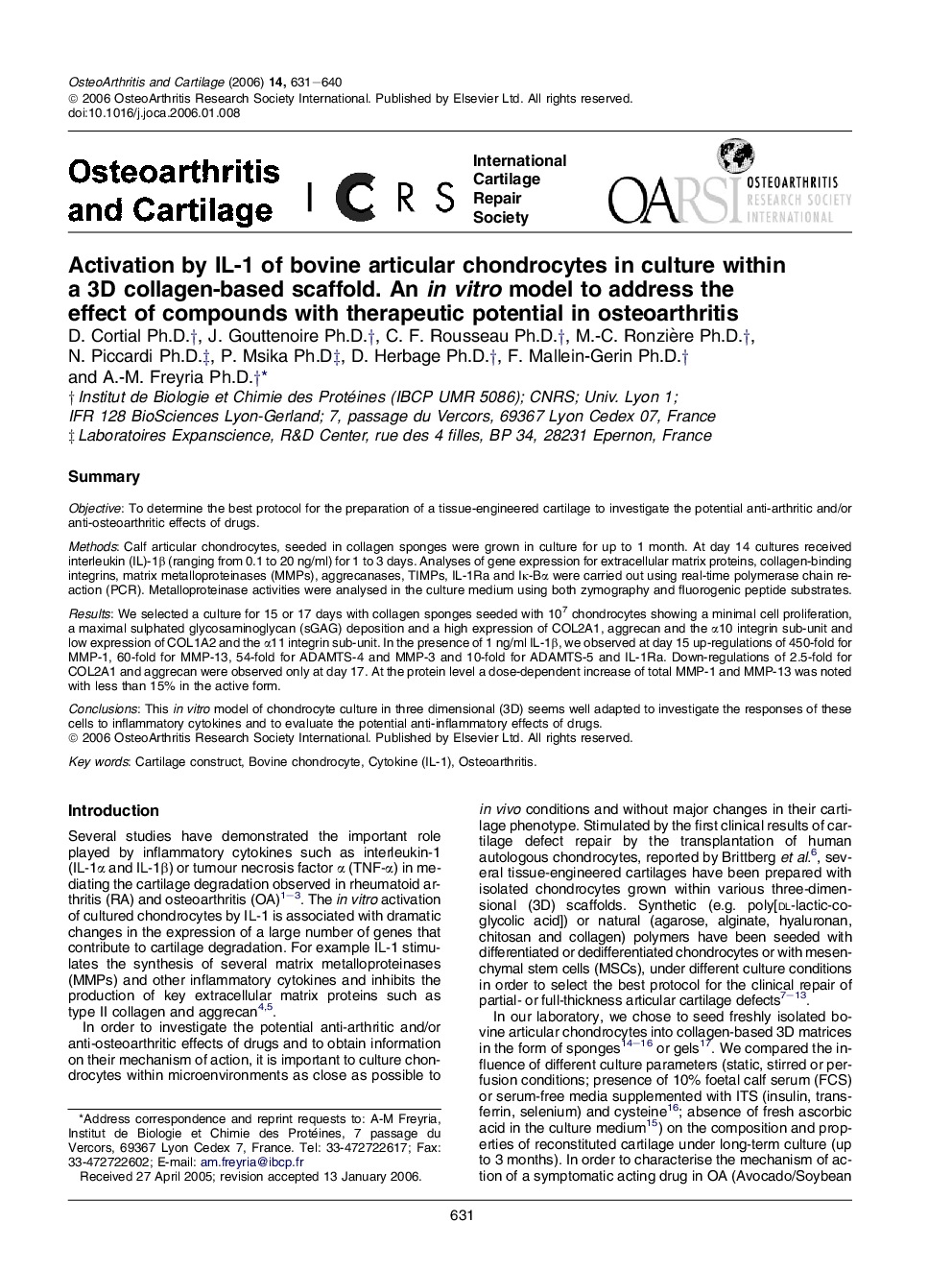| Article ID | Journal | Published Year | Pages | File Type |
|---|---|---|---|---|
| 3382116 | Osteoarthritis and Cartilage | 2006 | 10 Pages |
SummaryObjectiveTo determine the best protocol for the preparation of a tissue-engineered cartilage to investigate the potential anti-arthritic and/or anti-osteoarthritic effects of drugs.MethodsCalf articular chondrocytes, seeded in collagen sponges were grown in culture for up to 1 month. At day 14 cultures received interleukin (IL)-1β (ranging from 0.1 to 20 ng/ml) for 1 to 3 days. Analyses of gene expression for extracellular matrix proteins, collagen-binding integrins, matrix metalloproteinases (MMPs), aggrecanases, TIMPs, IL-1Ra and Iκ-Bα were carried out using real-time polymerase chain reaction (PCR). Metalloproteinase activities were analysed in the culture medium using both zymography and fluorogenic peptide substrates.ResultsWe selected a culture for 15 or 17 days with collagen sponges seeded with 107 chondrocytes showing a minimal cell proliferation, a maximal sulphated glycosaminoglycan (sGAG) deposition and a high expression of COL2A1, aggrecan and the α10 integrin sub-unit and low expression of COL1A2 and the α11 integrin sub-unit. In the presence of 1 ng/ml IL-1β, we observed at day 15 up-regulations of 450-fold for MMP-1, 60-fold for MMP-13, 54-fold for ADAMTS-4 and MMP-3 and 10-fold for ADAMTS-5 and IL-1Ra. Down-regulations of 2.5-fold for COL2A1 and aggrecan were observed only at day 17. At the protein level a dose-dependent increase of total MMP-1 and MMP-13 was noted with less than 15% in the active form.ConclusionsThis in vitro model of chondrocyte culture in three dimensional (3D) seems well adapted to investigate the responses of these cells to inflammatory cytokines and to evaluate the potential anti-inflammatory effects of drugs.
